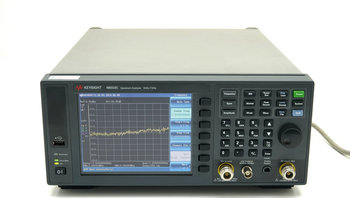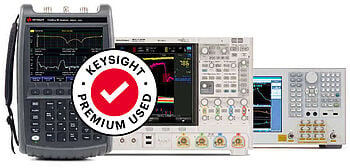- Introduction
- EMI Testing Definition
- Importance of EMI Testing
- Types of EMI Testing
- Conducted Emissions Testing
- Radiated Emissions Testing
- Conducted Immunity Testing
- Radiated Immunity Testing
- Additional Testing Types
- EMI Testing Standards
- EMI Testing Equipment
- Spectrum Analyzers
- EMI Receivers
- Oscilloscopes
- Near-field probes
- Steps in EMI Testing
- Best Practices for EMI Testing
- Conclusion
- Whenever You’re Ready, Here Are 5 Ways We Can Help You
Did you know that electromagnetic interference (EMI) can cause critical systems in vehicles to malfunction, such as advanced driver-assistance systems (ADAS)?
Imagine designing a car where the radar sensor interferes with GPS navigation, leading to inaccurate directions or failed safety features.
Scenarios like this make EMI testing essential for engineers like you, ensuring devices work together seamlessly and meet stringent performance standards.
EMI Testing Definition
EMI testing evaluates a device's ability to operate without emitting excessive electromagnetic interference and its resilience to external EMI sources.
This process ensures electromagnetic compatibility (EMC), allowing multiple electronic devices to function together without mutual interference.
| Key Takeaway |
|---|
| Electromagnetic interference (EMI) can disrupt device performance and cause compliance issues, making thorough testing essential for reliable and safe electronic systems. By identifying and mitigating emissions and immunity problems early, you can ensure your designs meet regulatory standards and function effectively in real-world environments. |
Importance of EMI Testing
Conducting EMI testing is essential for several reasons:
- Regulatory compliance: Many countries mandate EMI testing to meet specific standards before products can enter the market.
- Device performance: EMI can degrade device functionality; testing helps identify and mitigate these issues.
- Safety assurance: Excessive EMI can pose safety hazards, especially in critical applications like medical devices.
Types of EMI Testing
EMI testing ensures that electronic devices display minimal interference and operate effectively in environments where electromagnetic interference is present.
To achieve this, EMI testing focuses on two key aspects: emissions and immunity. Here's a closer look at the primary types of EMI testing.
Conducted Emissions Testing
Conducted emissions testing measures the electromagnetic energy transmitted through a device's power lines, signal cables, or other conductors.
Excessive emissions can disrupt other devices sharing the same power source, such as in industrial setups or shared networks.
- Common applications: Ensuring compliance for devices used in densely packed environments, such as data centers or medical facilities.
- Test setup: A line impedance stabilization network (LISN) connects the device under test (DUT) to simulate real-world power conditions. The LISN channels unwanted emissions to a spectrum analyzer or EMI receiver for measurement.
- Mitigation techniques: Engineers can reduce conducted emissions by adding filters to power lines, improving grounding, or using shielded cables.
Radiated Emissions Testing
Radiated emissions testing evaluates the electromagnetic energy a device emits through the air. Devices that radiate excessive emissions can interfere with nearby equipment, such as communication systems or sensitive sensors.
- Common applications: Testing wireless devices, consumer electronics, or automotive components.
- Test setup: The DUT is placed in an anechoic chamber or an open area test site (OATS) to prevent external interference. Antennas measure emissions at specific distances, commonly 3 or 10 meters.
- Regulations: Standards like CISPR 22 and FCC Part 15 specify acceptable radiated emission levels for different product categories.
Conducted Immunity Testing
Conducted immunity testing assesses a device's ability to withstand electromagnetic disturbances conducted through power lines or signal cables. These disturbances can come from nearby devices, industrial equipment, or power surges.
Common applications: Ensuring robust operation of industrial controllers, medical devices, or avionics systems.
Test setup: Engineers use a coupling/decoupling network (CDN) to inject specific disturbance signals into the device's power or signal lines. The response is monitored to ensure continued functionality.
Test goals: Verify that the device performs as intended, even when subjected to high levels of conducted interference.
Radiated Immunity Testing
Radiated immunity testing evaluates how well a device resists electromagnetic fields in its operating environment.
This test is crucial for devices used near strong field sources, such as radio transmitters or industrial equipment.
Common applications: Testing devices in automotive, aerospace, or communication industries.
- Test setup: The DUT is placed in a shielded chamber and exposed to controlled electromagnetic fields generated by antennas. The fields are varied in strength and frequency to simulate real-world conditions.
- Regulations: Standards like IEC 61000-4-3 provide guidelines for immunity testing, including required field strengths and test durations.
- Mitigation techniques: Engineers often improve shielding, modify enclosure designs, or add circuit protection to improve immunity.
Additional Testing Types
While conducted and radiated tests are the most common, other specialized EMI tests may be necessary depending on the application:
- Electrostatic Discharge (ESD) Testing:
- Assesses a device's resilience to static discharges from human touch or nearby surfaces.
- Often performed according to IEC 61000-4-2 standards.
- Magnetic Field Immunity Testing:
- Evaluates a device's tolerance to magnetic fields, which can disrupt sensitive components like sensors or transformers.
- Transient Emissions Testing:
- Measures the effects of short bursts of energy caused by events like power surges or switching operations.
EMI Testing Standards
Adhering to international standards is vital for ensuring device compatibility and market access.
Here are some widely recognized EMI standards:
| Standard | Description |
|---|---|
| CISPR 11 | Applies to industrial, scientific, and medical equipment. |
| CISPR 22 | Pertains to information technology equipment. |
| CISPR 25 | Relates to vehicles, boats, and internal combustion engine-driven devices. |
| IEC 61000-4-2 | Focuses on electrostatic discharge immunity testing. |
| IEC 61000-4-3 | Concerns radiated, radio-frequency, electromagnetic field immunity testing. |
Compliance with these standards ensures your device meets global EMC requirements.
EMI Testing Equipment
EMI testing requires precise tools to measure emissions, assess immunity, and identify potential sources of interference. Each instrument plays a specific role in ensuring devices meet regulatory and functional requirements.
Spectrum Analyzers
Spectrum analyzers measure the amplitude of signals across a range of frequencies. They are essential for identifying and quantifying electromagnetic emissions from a device under test (DUT).
These instruments can isolate specific frequencies, helping you determine if the emissions exceed regulatory limits.
- Applications: Ideal for conducted and radiated emissions testing, especially when troubleshooting compliance failures.
- Advanced features: Modern spectrum analyzers often include preselection filters and built-in EMI measurement software to streamline testing and reporting.
EMI Receivers
EMI receivers are highly specialized instruments designed specifically for electromagnetic compatibility (EMC) testing. They adhere to international standards, such as CISPR 16-1-1, ensuring precise and reliable measurements of emissions.
- Key difference: Unlike general-purpose spectrum analyzers, EMI receivers have higher sensitivity and are calibrated to meet compliance requirements.
- Functionality: These receivers often integrate peak, quasi-peak, and average detectors to measure emissions in ways required by standards.
- Example standards: CISPR 11 (industrial equipment) and CISPR 22 (IT devices).

Oscilloscopes
Oscilloscopes provide a time-domain visualization of voltage signals, making them invaluable for analyzing transient EMI events. While not always used for compliance testing, they are critical for debugging and identifying the sources of interference within a circuit.
- Use cases:
- Observing power supply noise.
- Capturing transient spikes caused by switching components or ESD events.
- Advanced capabilities: Modern oscilloscopes often include features like FFT (Fast Fourier Transform) analysis, allowing you to convert time-domain signals into frequency-domain representations for deeper insights.
Near-field probes
Near-field probes detect electromagnetic fields in close proximity to the DUT. They help you locate the exact sources of EMI on a circuit board, such as noisy components or problematic traces.
- How they work: These handheld probes pick up radiated emissions in the near field and feed the signal to an oscilloscope or spectrum analyzer for analysis.
- Advantages: Near-field probes are non-intrusive, allowing you to probe circuits without modifying them.
- Common applications: Debugging PCBs, identifying hotspots, and assessing shielding effectiveness.
Steps in EMI Testing
Conducting EMI testing involves several key steps to ensure comprehensive evaluation.
- Pre-compliance testing: Perform initial tests during the design phase to identify potential EMI issues early, allowing for cost-effective mitigation.
- Selection of test environment: Choose appropriate test environments, such as anechoic chambers for radiated emissions or shielded rooms for conducted emissions, to ensure accurate measurements.
- Measurement setup: Configure the device under test (DUT) with the necessary equipment, including spectrum analyzers, oscilloscopes, and near-field probes, to capture relevant data.
- Data analysis: Analyze the collected data to identify emission levels and compare them against standard limits, determining compliance or the need for further mitigation.
- Mitigation and retesting: Implement necessary design changes or shielding to reduce EMI, followed by retesting to verify the effectiveness of the mitigation strategies.
Best Practices for EMI Testing
To achieve accurate and reliable results in EMI testing, consider the following best practices:
- Early testing: Conduct EMI testing early in the design process to identify and address issues before they become costly to fix.
- Proper grounding and shielding: Ensure that your device has adequate grounding and shielding to minimize EMI emissions and susceptibility.
- Use of filters: Incorporate filters to suppress unwanted frequencies and reduce conducted emissions.
- Regular calibration: Regularly calibrate your testing equipment to maintain measurement accuracy and reliability.
- Documentation: Keep detailed records of test setups, procedures, and results to facilitate troubleshooting and compliance verification.
Conclusion
EMI testing is a critical process to ensure your devices meet regulatory standards, function reliably, and coexist with other electronic systems.
Key aspects include testing for conducted and radiated emissions and assessing immunity to interference. Following best practices and utilizing the right tools can save time and ensure compliance.
For high-quality, reliable testing equipment, explore the Keysight Used Equipment Store. You’ll find premium used oscilloscopes, spectrum analyzers, function generators, and multimeters—all rigorously tested and calibrated to meet your needs. Visit Keysight today and equip your lab with the tools you can trust.

Whenever You’re Ready, Here Are 5 Ways We Can Help You
- Browse our Premium Used Oscilloscopes.
- Call tech support US: +1 800 829-4444
Press #, then 2. Hours: 7 am – 5 pm MT, Mon– Fri - Talk to our sales support team by clicking the icon (bottom right corner) on every offer page
- Create an account to get price alerts and access to exclusive waitlists.
- Talk to your account manager about your specific needs.
